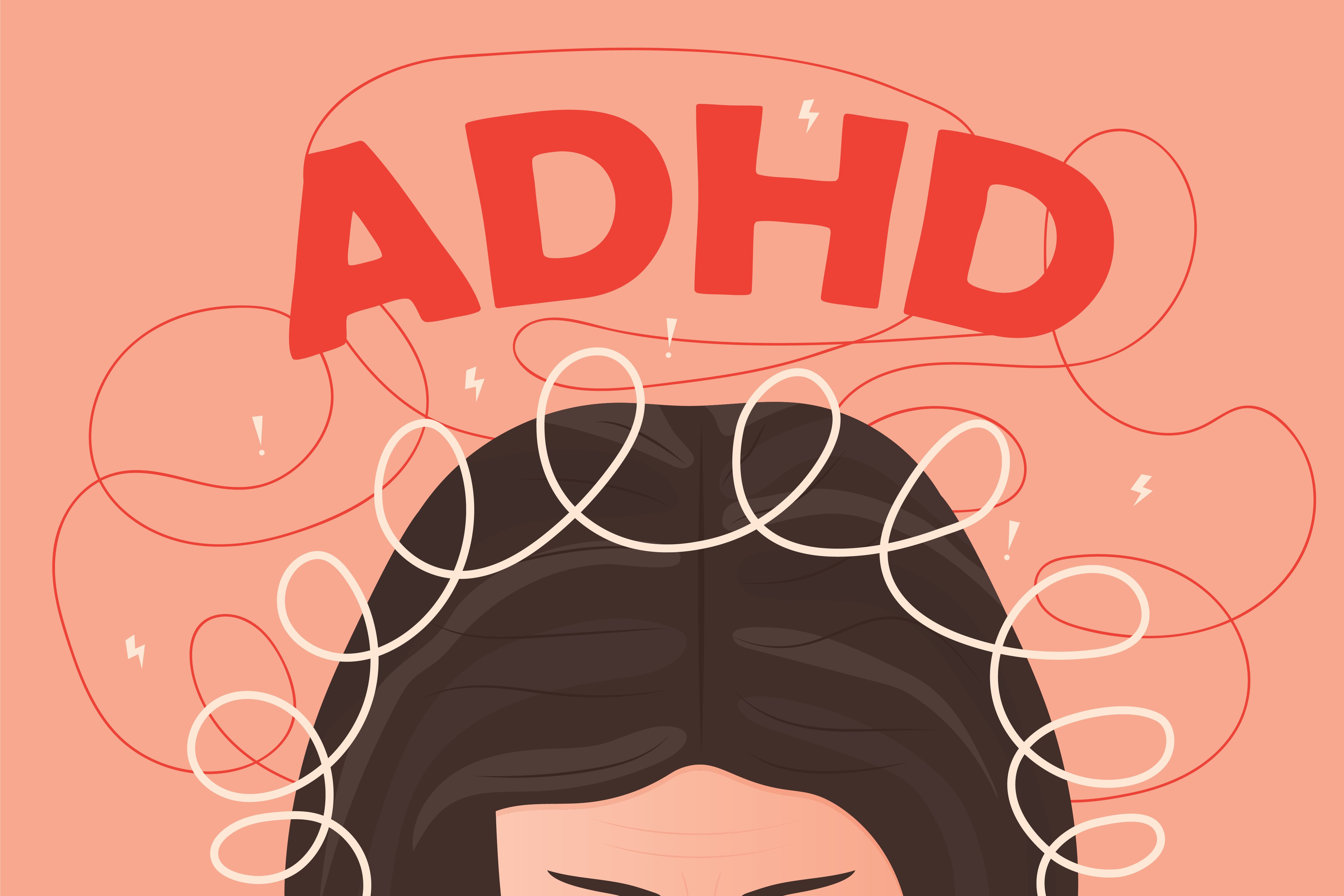Publication
Article
Psychiatric Times
Pediatric ADHD and the Cultural Psychotherapeutic Model
Author(s):
The authors discuss the assessment and treatment of pediatric ADHD within the framework of the cultural psychotherapeutic model.
TABLE Cultural psychotherapeutic guidelines for pediatric ADHD

In this article, we discuss the assessment and treatment of pediatric ADHD within the framework of the cultural psychotherapeutic model.1
Despite extensive literature on the pathophysiology and pharmacology of ADHD, there is a dearth of information to guide behavioral health care of culturally diverse populations. This is particularly concerning, given the rapid growth of ethnic minority populations in the US and health disparities in these populations.2 Although differences in prevalence of pediatric ADHD among ethnicities are narrowing, rates of ADHD remain higher in non-Hispanic white children than in children of Hispanic, Latino, or Asian backgrounds.3,4 It is uncertain whether these variations in prevalence reflect inherent biological differences and/or are influenced by reporters’ (ie, teachers, parents) cultural meanings, which are a group’s most common understandings about what it expects (eg, normal and abnormal).5
Nevertheless, it is clear that the number of minority children with ADHD who access care and receive treatment is significantly lower than that of non-Hispanic white youths.2,6,7 For example, Latinos and African Americans are not only less likely to access mental health services, but when they do, they are also more likely to discontinue treatment, particularly stimulant treatment.6
The cultural psychotherapeutic framework
Many cultural minority parents are hesitant to explain their children’s behavioral difficulties as a medical disorder or ADHD. Consequently, they are reluctant to believe that these difficulties can be treated with medications, and they do not follow the prescribed medical treatment. For example, a Haitian explanatory model might be that a child’s restlessness is a result of bad spirits, which could lead the family to consult a priest (ie, hougan) rather than a psychiatrist.7 When treatments match a family’s cultural values, practices, and resources, both their efficacy and patient adherence to them increase.1 The cultural psychotherapeutic framework is based on the idea that successful treatment is founded on shared (between family and clinicians) understanding of a child’s problems and goals, and of the therapeutic interventions that can be used to address them.
Employing the cultural psychotherapeutic approach
The cultural psychotherapeutic approach to pediatric ADHD begins with a thorough assessment of the child and his or her cultural context. The culturally informed model for pediatric ADHD can be illustrated using the following case vignette.
CASE VIGNETTE
Eva, a 27-year-old never-married mother of 4, immigrated to the US from rural Puerto Rico, seeking a better life for her young family. Within the first 6 months of the children’s school year, a family pediatrician referred her to a local mental health clinic for clinical assessment of her 10-year-old son, Pedro. Eva described Pedro as having serious problems: “He cannot stay still at home, school, or in church.” She eagerly shared examples of her son’s “misbehavior” and stated that she raised Pedro poorly; unlike her own parents, she was not strict enough.
Cultural exploration of treatment goals
For treatment to proceed, it is of the utmost importance to have agreed-on, culturally informed treatment goals.1,8 Examining the family’s cultural view may increase long-term adherence and investment in treatment. A useful strategy to obtain this information is through the cultural formulation now expanded in DSM-5. Not conducting such a cultural exploration can lead to premature rupture of the therapeutic relationship.
The family’s understanding of behavioral difficulties (eg, not being strict enough) must inform the assessment and therapeutic process as well.1,9 Eva described a treatment goal of helping Pedro be more respectful and obedient. Hyperactivity and impulsivity, a symptom cluster in ADHD, may be construed differently in specific cultural contexts.10 For example, Latino and Asian families may have a lower tolerance of restlessness than do white and African American families. Thus, Eva may not conclude that her son’s behavior may be a medical disorder, namely ADHD. This illustrates the importance of exploring cultural meanings and contexts for each patient rather than inferring cultural characteristics because of overall ethnic and racial patterns.
The therapeutic alliance
As health care professionals become more culturally sensitive, complex cultural meanings and resources are increasingly identified and incorporated into the assessment process and treatment plan. Three Latino cultural variables serve well to illustrate this idea.11Respeto expresses the cultural value of deference to authority figures, familismo involves placing a high value on family while devaluing outside relationships, and allocentrism/collectivism refers to the tendency to define oneself in relation to others and seek group goals. This latter variable is in stark contrast to idiocentrism/individualism, in which people define themselves in isolation from others and seek individual goals.
The belief that parents are primarily responsible for their children’s difficult behavior is prevalent among many ethnic groups.12 As cultural meanings were explored, Eva explained how her parents had emphasized respeto, which translated into staying still, being obedient, and keeping silent in the presence of authority figures. Thus, given her cultural expectations, it was challenging for Eva to be patient with Pedro; she repeatedly blamed herself for not being a good parent.
Language differences can hinder the formation of the therapeutic alliance. Consistent with the concept of familismo, it is important for clinicians to form a positive relationship with the child’s significant caregivers (eg, grandmother, aunt). When both parents are involved in the child’s life, one parent, often the mother, may be the primary person present at appointments and receiving information from the clinician. This can isolate the other parent, often the father, from direct participation in the treatment of the child.
As the therapeutic relationship evolves, the health care professional gradually comes to be perceived as part of the family, which is consistent with the idea of familismo. An enhanced awareness of this cultural value can allow clinicians to more effectively deal with the intensity of this relationship rather than pathologizing it as enmeshment.
Therapeutic treatment tools
Treatment recommendations for pediatric ADHD include psychoeducation, medication, evidence-based parent- and/or teacher-administered behavioral therapies, and targeted school supports.13 Psychoeducation includes teaching the family about ADHD-including its developmental course and treatment recommendations-and providing guidance on how to improve the child’s academic functioning and lessen behavioral problems. To deliver effective psychoeducation, it is beneficial to include assets from the patient’s context and cultural meanings (Table).
The family’s contextual stresses (eg, long work hours, racial discrimination, poverty), which can present additional barriers to successful treatment, must be acknowledged. Eva discussed how her unpredictable work schedule made it nearly impossible to maintain home routines that could be beneficial for Pedro. However, as Eva and her clinicians discussed these stresses, her self-blame began to decrease and she was able to explore new possibilities. She asked her mother to stay home with the children when she was at work and provided her with clear instructions on home routines.
Adherence to a medication regimen is predicated on having a trusting relationship with the prescribing clinician (eg, physician, nurse practitioner); adherence, in turn, increases the likelihood of medication effectiveness. Multiple visits may be required to establish a therapeutic alliance and for the family to process critical ADHD information.
Clinical research is needed to explore how specific cultural and contextual variables can moderate and/or mediate response to ADHD medication. This knowledge can support more relevant conversations about the risks and benefits of ADHD medications for a given family. Eva had concerns about ADHD medications; she feared that the medications were addictive or signified a serious mental illness. Such fears may result in parents rejecting treatment recommendations or not adhering to the medication plan. As Eva addressed her concerns, she developed a trusting relationship with Pedro’s psychiatrist and became more open to Pedro being treated with ADHD medications.
In addition to providing general psychoeducation and medication for ADHD, the clinician working with Pedro and his mother proposed behavioral and organization strategies to encourage Pedro to become more respectful and help him achieve greater emotional and behavior regulation. For example, to address a mild degree of tension and worry related to his academic struggles, Pedro’s health care professionals taught him a relaxation strategy that included diaphragmatic breathing and guided imagery. They recommended practicing these techniques before going to school, going to bed, or starting his homework-situations in which Pedro had the most trouble listening and being respectful to his mother.
Most guided imagery scripts are based on individualistic or other western European and North American assumptions (“imagine yourself alone in a peaceful space”) rather than in relationship to others (“imagine yourself with your loved ones in a peaceful space”).14 A review of 123 guided scripts published in journals of the American Psychiatric and American Psychological associations from 1989 to 2008 found that the vast majority of these scripts asked patients to imagine themselves “alone.” However, many minorities who view themselves in relationship to others, or in allocentric/collective terms, do not find these images relaxing; some have even reported that they were anxiogenic.1 Pedro found it very helpful to imagine himself with his family near a peaceful, sunny brook in Puerto Rico as he rehearsed his diaphragmatic breathing.
Conclusions
The cultural psychotherapeutic framework is based on the idea that successful treatment is founded on shared understanding of a child’s problems, with treatments thoughtfully tailored for each child and family. Consideration of cultural and contextual variables in children with ADHD informs the understanding of diverse influences on clinical presentations to best support a shared definition of a child’s behavioral health problems. Clinicians’ and families’ subsequent exploration of treatment goals will benefit from a culturally sensitive therapeutic alliance. The growing ethnic and cultural diversity in the US and the high prevalence of ADHD underscore the importance of developing effective, culturally competent strategies and treatment guidelines that can be offered to all families.
Disclosures:
Dr La Roche is Assistant Professor of Psychology in the department of psychiatry at Boston Children’s Hospital/Martha Eliot Health Center, Harvard Medical School. Dr Carrick is a Psychiatrist in the department of psychiatry at Boston Children’s Hospital. Dr Hammerness is Scientific Coordinator of Pediatric ADHD Research of the Clinical and Research Unit in Pediatric Psychopharmacology and Adult ADHD at Massachusetts General Hospital, Assistant Professor of Psychiatry at the Harvard Medical School, and Director of the Child and Adolescent Psychiatry Clinic in Newton Wellesley Hospital. Dr La Roche reports that he is the author of Cultural Psychotherapy: Theory, Methods, and Practice (Sage Publications, 2013). Dr Carrick reports that she has no conflicts of interest concerning the subject matter of this article. Dr Hammerness reports that he receives royalties for ADHD, Biographies of a Disease (Greenwood Press, 2009) and Organize Your Mind, Organize Your Life (Harlequin Press/Harvard University, 2012) and that he is co-creator of the Before-School Functioning Scale, owned by Massachusetts General Hospital and is licensed to Ironshore Pharmaceuticals and Development Inc.
References:
1. La Rocher M. Cultural Psychotherapy: Theory, Methods, and Practice. Thousand Oaks, CA: Sage Publications; 2013.
2. US Department of Health and Human Services. Mental Health: Culture, Race, and Ethnicity: A Supplement to Mental Health: A Report of the Surgeon General. 2001. http://www.ncbi.nlm.nih.gov/pubmed/20669516. Accessed May 8, 2015.
3. Bloom B, Jones LI, Freeman G. Summary health statistics for U.S. children: National Health Interview Survey, 2012. Vital Health Stat 10. 2013;258:1-81.
4. Akinbami LJ, Liu X, Pastor PN, Reuben CA. Attention deficit hyperactivity disorder among children aged 5-17 years in the United States, 1998-2009. 2011. http://www.cdc.gov/nchs/data/databriefs/db70.htm#ADHD. Accessed May 8, 2015
5. DomÃnguez de RamÃrez R, Shapiro ES. Effects of student ethnicity on judgments of ADHD symptoms among Hispanic and White teachers. Sch Psychol Q. 2005;20:268-287.
6. Marcus SC, Durkin M. Stimulant adherence and academic performance in urban youth with attention-deficit/hyperactivity disorder. J Am Acad Child Adolesc Psychiatry. 2011;50:480-489.
7. Prudent N, Johnson P, Carroll J, Culpepper L. Attention-deficit/hyperactivity disorder: presentation and management in the Haitian American child. Prim Care Companion J Clin Psychiatry. 2005;7:190-197.
8. Sue DW, Sue D. Counseling the Culturally Diverse: Theory and Practice. 5th ed. Hoboken, NJ: John Wiley & Sons, Inc; 2013.
9. Hinton D, Good B, eds. Culture and Panic Disorder. Stanford, CA: Stanford University Press; 2009.
10. Alban-Metcalfe J, Cheng-Lai A, Ma T. Teacher and student teacher ratings of attention-deficit/ hyperactivity disorder in three cultural settings. Int J Disabil Dev Educ. 2002;49:281-299.
11. Marin G, VanOss Marin B. Research With Hispanic Populations. Newbury Park, CA: Sage Publications; 1991.
12. Bussing R, Gary FA, Mills TL, Garvan CW. Parental explanatory models of ADHD: gender and cultural variations. Soc Psychiatry Psychiatr Epidemiol. 2003; 38:563-575.
13. Subcommittee on Attention-Deficit/Hyperactivity Disorder; Steering Committee on Quality Improvement and Management; Wolraich M, Brown L, Brown RT, et al. ADHD: clinical practice guideline for the diagnosis, evaluation, and treatment of attention-deficit/hyperactivity disorder in children and adolescents. Pediatrics. 2011;128:1007-1022.
14. La Roche MJ, Batista C, D’Angelo E. A content analysis of guided imagery scripts: a strategy for the development of cultural adaptations. J Clin Psychol. 2011;67:45-57.































